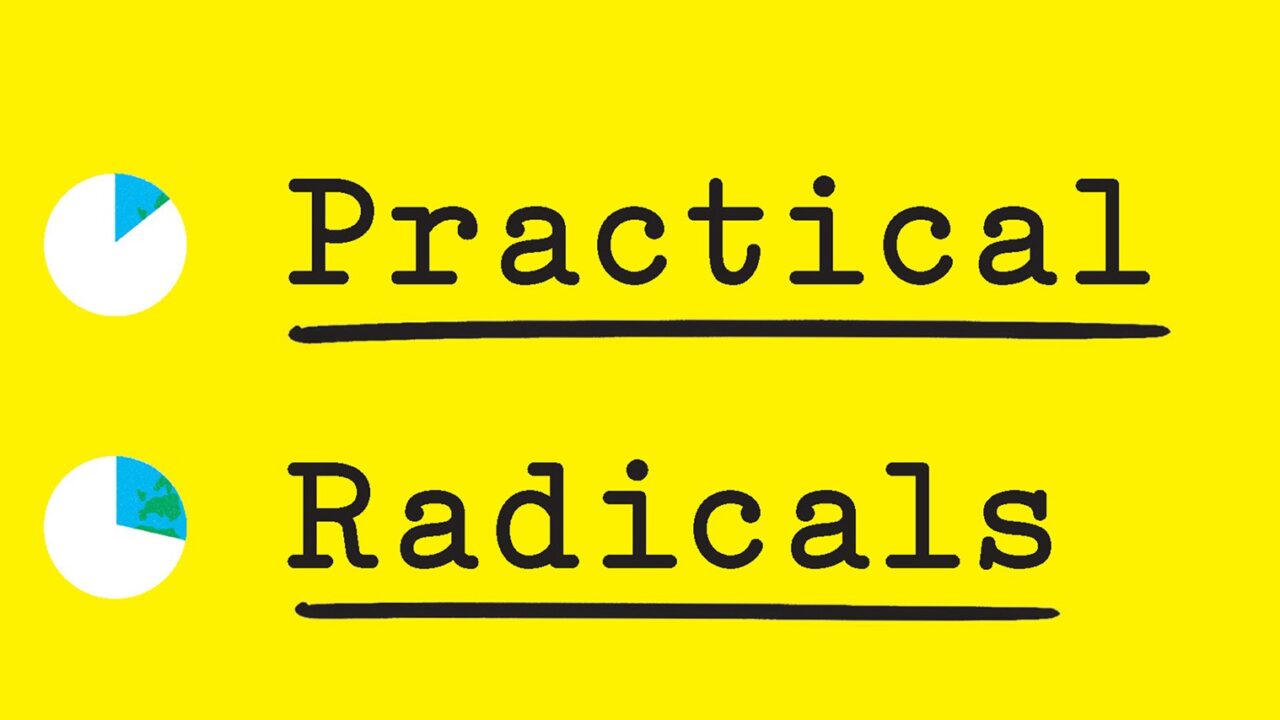We live in an age of people-powered social change. As everyday people’s confidence in governing elites and institutions collapses, and campaigns on the Left and Right ebb and flow, understanding how movements win is more important than ever.
In the past few years, the movement for Black Lives, the youth climate movement, an upsurge of worker organizing and the broad-based resistance to Donald Trump have brought millions of people to the streets. Meanwhile, on the Right, mass movements have brought authoritarians to power across the globe. In the U.S., a growing white nationalist movement plotted with the sitting president to mount a coup, and they have not stopped plotting.
During our combined six decades of experience in movement building and organizing for progressive causes, both of us found the absence of compelling, comprehensive and accessible frameworks for understanding strategy, organizing and movements frustrating. While organizers and academics often invoke the concept of power, they rarely agree about what it is. As a result, the Left has been sleeping on movement strategy that could help us win big some of our biggest battles – on everything from immigration, abortion, climate change, and democracy itself.
With this issue on our minds, we began teaching a class on “Power and Strategy” at the CUNY School of Labor and Urban Studies in 2020. That first class brought together thirty exceptional students, many of whom had run important campaigns for labor, community, and other organizations, to workshop ideas and strategies that could offer a practical framework for people trying to change the world.
There was some madness that first semester as we coped with teaching students all over the country. But there was also magic. We recruited iconic movement leaders to guest teach, like Heather Booth, Frances Fox Piven, Alan Jenkins, Cristina Jimenez, Eliseo Medina and Maurice Mitchell. Students grappled with classic movement texts by W.E.B. DuBois, A.J. Muste, and the Combahee River Collective, as well as some of the best academic writing we found about strategy. One of our favorite sessions invites students to build a thirty-year plan for the Left, modeled off the infamous Powell memorandum, a text that exemplifies the approach of the Right-wing architects whose cruel and reactionary visions shaped the world we live in today.
We learned in that time that surprisingly few students had had formal training in the various lineages of organizing and strategy that are, or should be, their inheritance. Instead, most had been trained in a technical craft in one particular school, not in the arts of power and strategy. This contrasts with what we have learned about how Right-wingers train leaders at business schools and in the military, which emphasize strategy and vision rather than technical know-how. The motto on the homepage of the website of the conservative Leadership Institute, which has trained over 200,000 people, is compelling and simple: “You owe it to your philosophy to learn how to win.” Indeed.
The practice of rigorous strategy on the Left has deteriorated in recent years. Organizers debate whether you can teach strategy at all, or if the ability is mostly innate. Our view is that great strategists are made, not born. Strategy can be taught, and strategists can get better with practice.
We wrote our book, Practical Radicals, to offer effective organizing strategies to a segment of the Left who might embrace the titular label. These are organizers who hold big visions for transforming society and are willing to do what it takes to win in the real world. Legendary organizer Bayard Rustin, a consummate practical radical, criticized two other dominant ways of approaching social change: “My quarrel with the ‘no-win’ tendency in the civil rights movement (and the reason I have so designated it) parallels my quarrel with the moderates outside the movement. As the latter lack the vision or will for fundamental change, the former lack a realistic strategy for achieving it. For such a strategy they substitute militancy. But militancy is a matter of posture and volume and not of effect.”
Practical radicals are not content to be on the right side without a plan to make their vision a reality. And they are not satisfied with working on small issues without an analysis of what’s wrong with society and a vision of how it could be better.
There is no “one right way” to make change. This cultish tendency to exalt a particular practitioner or approach, while denigrating others, is pervasive and pernicious. We don’t believe any school of social change has a monopoly on effective strategy; in fact, we’ve found that our opponents can be worthy teachers too.
Developing strategy is analogous to music making – imagine different models of social change as different notes in the scale, which can be played together and in different combinations as melodies and harmonies. In our research, we’ve identified seven strategies that movements have used throughout history to make change – each relies on different sources of power and requires practitioners to master different skills.
Many successful movements and organizers intuitively learn to combine notes in novel ways in response to changing circumstances. But most people play instruments better with training. Our book aims to give practitioners access to a broad repertoire so they can compose the right melodies and harmonies for movements—to construct and participate in “meta-strategy.”
Two overarching case studies that anchor our book are the brilliant techniques used by enslaved people and their allies to end slavery, and the sinister but effective ways elites imposed our current system of racial capitalism.
The abolition movement harmonized various rigorous strategies to great effect, even using the strategies of oppressors as part of the 400-year fight. Each strategy was relevant in the movement, although not necessarily at the same time. Some strategies worked better under certain conditions, or in new conjunctures. Some forms of power were used to build others.
Enslaved people began building solidarity power and engaging in collective care the moment they were taken from their homes, forming alternative kinship structures on ships. People from different ethnicities and tribes were forced to live together, so they had to learn to communicate in new shared languages, thereby developing their capacities for collective resistance.
And when the Civil War ended, people had to rely heavily on collective care networks to find their lost family members, transition to new housing and work, and build new lives. People gathered by the thousands in what were essentially refugee camps. They formed scores of associations. These local organizing hubs were also key in the political advances made during Reconstruction.
Solidarity power was also used to do base-building work among formerly enslaved people, free Black people, Quakers, and other allies. Numerous organizations were founded in different countries in the late 1700s and early 1800s, such as the Society for the Abolition of the Slave Trade, formed in London in 1787, and the Anti-Man-Hunting League, a secret society formed in 1854 by about five hundred Black and white men in Boston to prevent Black people from being kidnapped and enslaved.
Enslaved workers were able to disrupt plantations from producing, through coordinated resistance and revolts. This occurred over decades, wherever slavery was in effect.
While half a million people left plantations during the Civil War, the resistance had gone on for decades prior. The Underground Railroad is an example of disruption rooted in solidarity power. Enslaved and formerly enslaved people helped one another escape and worked closely with white abolitionist allies—an early example of a multiracial alliance. Local communities built communication and support networks that helped enslaved people escape, or protected them once they arrived in a free state.
Hundreds of thousands of people escaped, and took their labor with them. The practice had a psychological impact on plantation owners, larger than any individual act. Oppressors often use tactics to disorient and demoralize the opponent, but in this case, the people on the side of the oppressed used the approach brilliantly. Some Underground Railroad activity was anything but “underground,” as abolitionists in the North publicly declared their willingness to break laws and assist escapees, stoking the paranoia of the plantation owners. Disruptive power built political power, as the Underground Railroad also undermined the legitimacy of chattel slavery and forced northern politicians to take sides in legislative battles over federal and state fugitive slave laws. This shows how disruptive power can help movements shift the narrative, building ideological power.
Today’s budding movement builders can use the abolitionist movement and other diverse lineages of social change as inspiration to appreciate and synchronize the multiple, intersecting, and (ideally) reinforcing paths to societal transformation. At the same time, practical radicals can’t expect to win simply by repeating what their ancestors did – instead, they may need to remix those strategies to meet today’s challenges. Like musicians, organizers must improvise in a dialogue with inherited traditions in order to compose new freedom songs.
Right now, compounding crises of racism, climate change, economic inequality, attacks on women’s and LGBTQ+ rights, nativism, and authoritarianism have pushed us into scary and unfamiliar waters. Among our movement colleagues, there is some exhaustion and despair, but there is also grit, imagination and hope that another world is possible. It’s important to remember that many progressive movements from the past prevailed against even greater odds than we face now. Now’s the time to educate ourselves and cultivate the collective capacity needed to imagine and build a different society.
A study guide for Practical Radicals is available here: https://www.socialjusticeleadership.org/resources
Copyright © 2023 by Deepak Bhargava & Stephanie Luce. This excerpt originally appeared in Practical Radicals: Seven Strategies to Change the World, published by The New Press. Reprinted here with permission.
Convergence is happy to co-publish this excerpt with The Forge.


